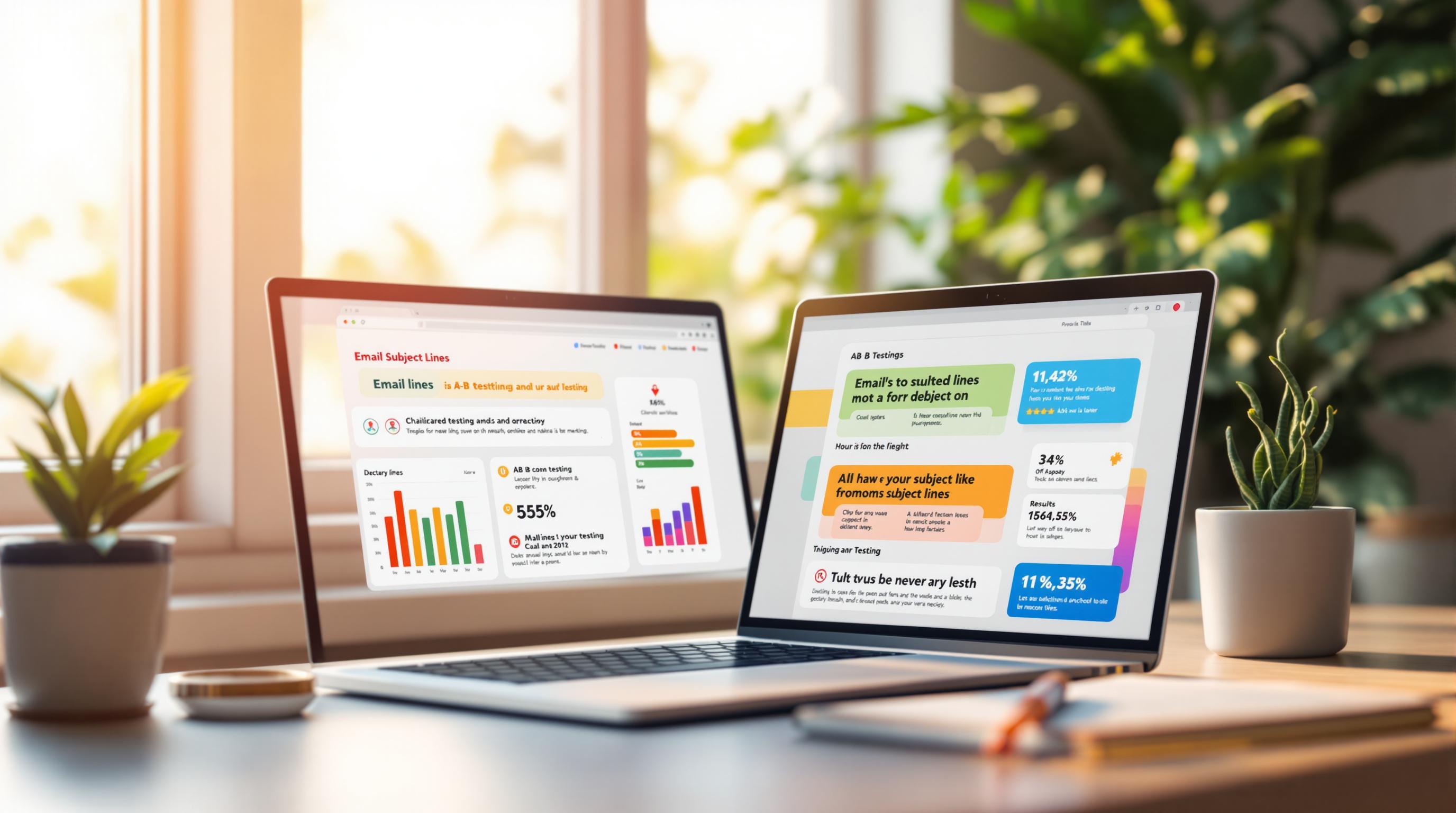GDPR compliance is non-negotiable for email marketing teams, impacting how you collect, store, and manage personal data. Violations can result in fines up to €20 million or 4% of annual global revenue. Here's what you need to know:
- Transparency: Use clear, unticked checkboxes and explain data usage.
- Consent: Obtain explicit, freely given consent and document everything.
- Data Security: Encrypt data, control access, and audit regularly.
- Email List Management: Clean databases, process opt-outs immediately, and track consent accurately.
Practical GDPR training helps teams integrate these practices into daily workflows. Use tools like AI-driven email extractors for compliant lead generation and schedule regular audits to stay on track.
Next Steps:
- Enroll your team in GDPR training.
- Update opt-in processes and privacy notices.
- Conduct quarterly audits to ensure compliance.
Start today to build trust, protect data, and avoid hefty penalties.
Understanding GDPR and Its Impact on Email Marketing
The GDPR has reshaped how email marketers handle personal data, introducing stricter rules to ensure privacy and compliance. Knowing these rules is crucial for staying within the law and earning subscribers' trust.
What is GDPR and Why Does It Matter?
The GDPR is a regulation designed to protect the personal data of EU citizens. It sets strict standards for how organizations collect, process, and store this information. For email marketers, following GDPR rules isn’t optional - violations can lead to penalties as high as €20 million or 4% of global annual revenue, whichever is greater [2].
This regulation focuses on three main principles: transparency, explicit consent, and accountability. Marketers must clearly explain how they will use data, obtain freely given permission, and keep detailed compliance records. These requirements directly influence how email marketing teams operate.
How GDPR Has Changed Email Marketing
Since its implementation, GDPR has led to €1.3 billion in fines, showing just how serious the consequences of non-compliance can be [4].
Some of the biggest changes for email marketers include:
- Data collection: Consent checkboxes must be unticked by default, with clear explanations of how data will be used. Separate permissions are required for different purposes.
- Database management: Teams need to regularly clean their databases, keep precise consent records, and promptly handle unsubscribe requests.
Every subscriber's consent must be documented, specifying what they agreed to and when. These records are essential for audits and ensuring compliance [1][2].
Training your team to handle these changes is key. GDPR training should focus on practical skills, helping teams integrate these principles into their daily workflows.
Key Topics for GDPR Training
Training email marketing teams on GDPR compliance means focusing on three main areas that are central to data protection and privacy rules.
Data Handling and Protection
Under GDPR, teams should only collect data that’s absolutely needed. This involves using secure methods for data collection, proper storage practices, and clear processing procedures.
Key security steps include:
- Using encrypted servers
- Setting up access controls
- Running regular security audits
- Keeping detailed records
But compliance isn’t just about securing data - it’s also about getting and documenting consent properly.
Consent Acquisition and Documentation
GDPR sets strict rules for consent. It must be clear, specific, and freely given. Teams need to avoid any practices that might seem coercive and use simple, straightforward language [1].
Best practices for consent include:
- Using unticked checkboxes
- Clearly explaining data usage
- Implementing double opt-in confirmations
It’s also important to document everything - timestamps, approved purposes, and opt-out records. Once consent is handled, the focus shifts to managing email lists in line with GDPR.
Effective Email List Management
Keeping email lists GDPR-compliant requires constant attention. Hands-on training, like mock audits or consent tracking exercises, can help teams refine their skills [1][2].
Key practices for managing email lists:
- Regularly validate email addresses and update records
- Process opt-out requests immediately
- Keep preference centers up to date
While email tools can help automate these tasks, teams still need to understand the core GDPR principles. Performing quarterly audits of email lists ensures valid consent records and lowers the risk of penalties, which can reach up to €20 million or 4% of global turnover [2].
Strategies for GDPR Compliance Training
To make GDPR training effective, it's crucial to combine theoretical learning with practical exercises. This not only ensures your team understands compliance but also builds trust with subscribers, which can lead to better email marketing results.
Using Online GDPR Training Resources
Online platforms are a great option for GDPR training, especially for marketing teams. For example, the GDPR for Marketing Staff Awareness E-Learning Course is tailored for email marketers, covering essential topics like consent collection and managing email lists [3].
Some benefits of online training include:
- Learning at your own pace
- Consistent knowledge across teams
- Certificates of completion for records
- Always-current materials
Practical Exercises and Scenarios
Training becomes more impactful when teams practice applying GDPR rules to real-world situations. Focus on exercises like:
- Creating opt-in forms that meet GDPR standards
- Resolving disputes over consent
- Managing subscriber preferences effectively
- Handling data access requests properly
To keep skills sharp, schedule regular activities such as:
- Privacy audits: Every three months
- Campaign creation exercises: Monthly
- Data processing reviews: Every two months
Keeping Up with GDPR Updates
"Online GDPR training is the easiest way to demonstrate compliance", says IT Governance USA [3].
To ensure ongoing compliance:
- Sign up for GDPR-focused newsletters
- Participate in relevant industry forums
- Plan regular refresher training sessions
- Keep a record of all updates and changes
sbb-itb-8abf799
Steps for Implementing GDPR Compliance
Following the principles of consent and data protection, here's a guide to help you navigate GDPR compliance effectively.
Creating Clear Opt-In Processes
The first step is ensuring consent collection is straightforward and transparent. Opt-in forms should clearly outline how data will be used, provide separate consent options (like newsletters, promotions, or product updates), and include a visible link to your privacy policy [1].
Key components to include:
- A clear explanation of why you’re collecting data and how it will be used.
- Separate, unticked checkboxes for different types of communication.
- An easy-to-find privacy policy link for users to review.
Keeping Records of Consent
Documenting consent is crucial for compliance. Make sure to record when and how consent was given, what the user agreed to, and where the consent was captured [5].
"Online GDPR training is the easiest way to demonstrate compliance", says IT Governance USA [3].
Conducting Regular Audits
Regular audits help maintain compliance and build trust with your audience. Aim to review your processes every quarter to:
- Clean up email lists by removing inactive subscribers.
- Check that opt-in forms and unsubscribe options are functioning properly.
- Ensure consent records are accurate and up-to-date.
- Review how securely data is being stored.
Email Extractor Tool - Extract Emails with Ai Automation

Using the right tools can simplify GDPR compliance and help ensure processes run smoothly. The Email Extractor Tool is designed to assist with GDPR-compliant lead generation through its AI-driven automation.
Features and GDPR Compliance
This tool uses AI to make email extraction easier while adhering to GDPR’s strict data protection standards. Here's how its features align with GDPR requirements:
| Feature | GDPR Compliance Advantage |
|---|---|
| Secure Data Handling | Follows GDPR Article 5 by applying data minimization and encryption principles |
| CSV/TXT Export Options | Helps maintain clear records for compliance audits |
| Automated Detection | Limits exposure of personal data through controlled extraction |
| Easy Cancellation | Simplifies data removal to support the right to erasure (Article 17) |
Although the tool streamlines email extraction, marketing teams still need to manage consent properly and document their practices as specified in GDPR guidelines [1].
Pricing Options for Different Business Sizes
The Email Extractor Tool offers flexible pricing plans to suit businesses of all sizes, making GDPR compliance more accessible. Every plan includes essential features for secure data management and organized record-keeping [6], supporting GDPR-compliant email marketing.
Key points to consider when selecting a plan:
- Volume of data processing in line with consent management capabilities
- Secure data handling built into all pricing tiers
- Scalable automation for compliant lead generation
Conclusion and Next Steps
Key Takeaways
Navigating GDPR compliance in email marketing means consistently applying its rules and understanding the stakes. Non-compliance can lead to steep fines - up to 4% of your annual global turnover [1]. Beyond the financial risks, following GDPR guidelines strengthens customer confidence and creates a solid base for your email marketing efforts.
The best GDPR training emphasizes secure data practices, clear consent procedures, and regular updates to stay aligned with changing regulations. Tools like the Email Extractor Tool can simplify compliance by helping with data organization and record management.
Immediate Actions for Training
Here are some key steps to prioritize for GDPR compliance:
| Timeline | Action Item |
|---|---|
| First 2 weeks | Enroll your team in GDPR training |
| Week 2 | Perform a compliance audit and update consent records |
| Weeks 3–4 | Update privacy notices and refine opt-in processes |
Incorporate practical exercises into your training to apply GDPR principles to real-world situations. This hands-on approach not only clarifies individual roles but also equips your team to confidently address data protection challenges [3].



